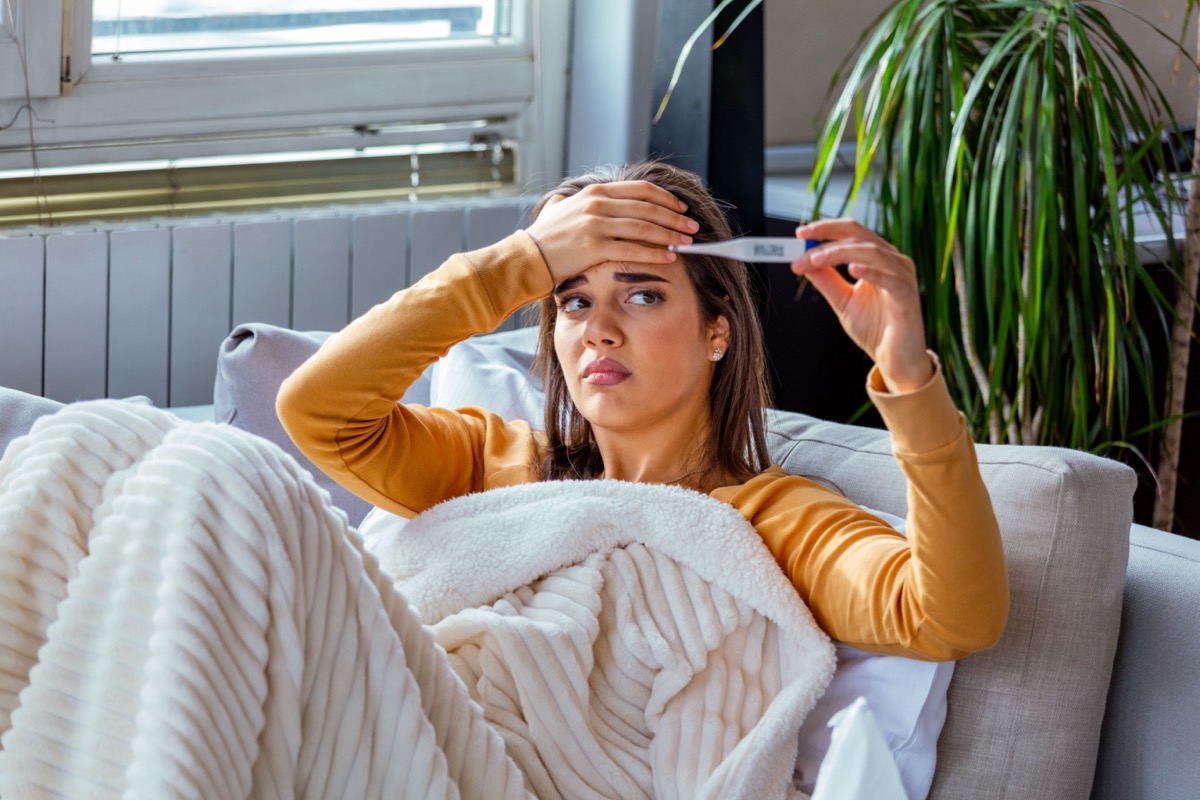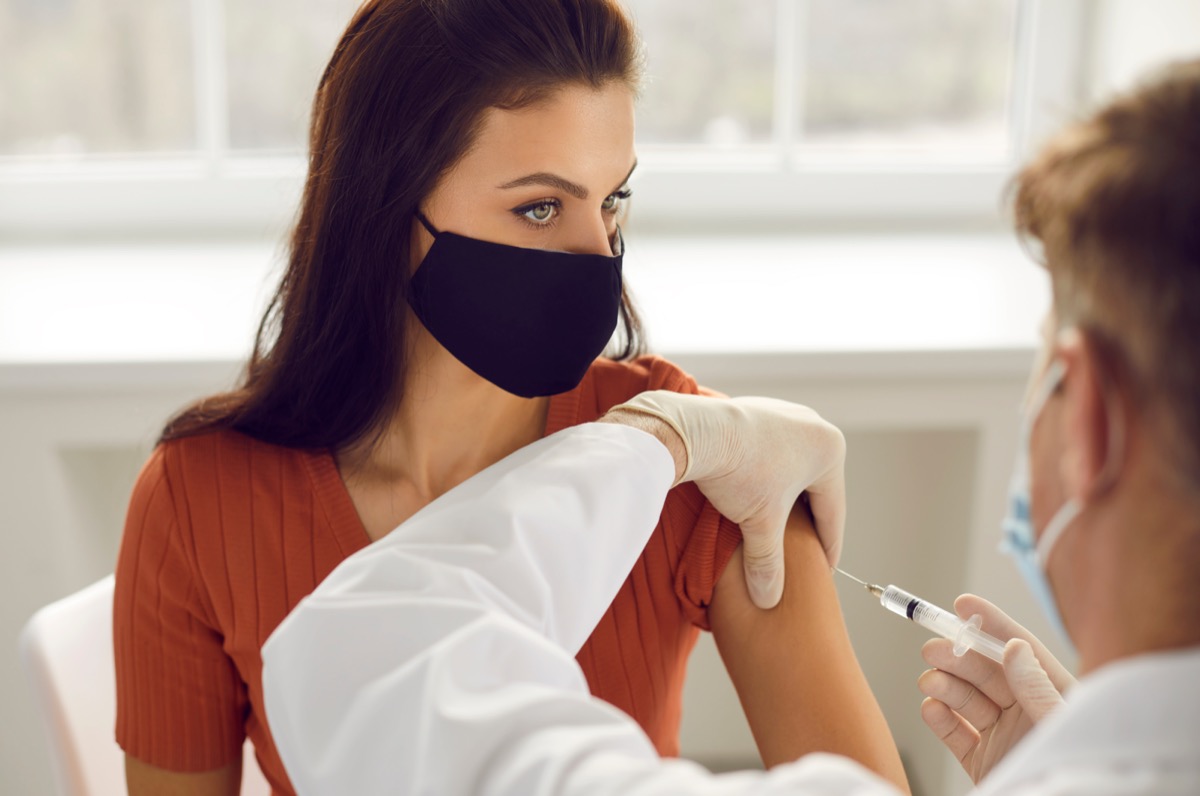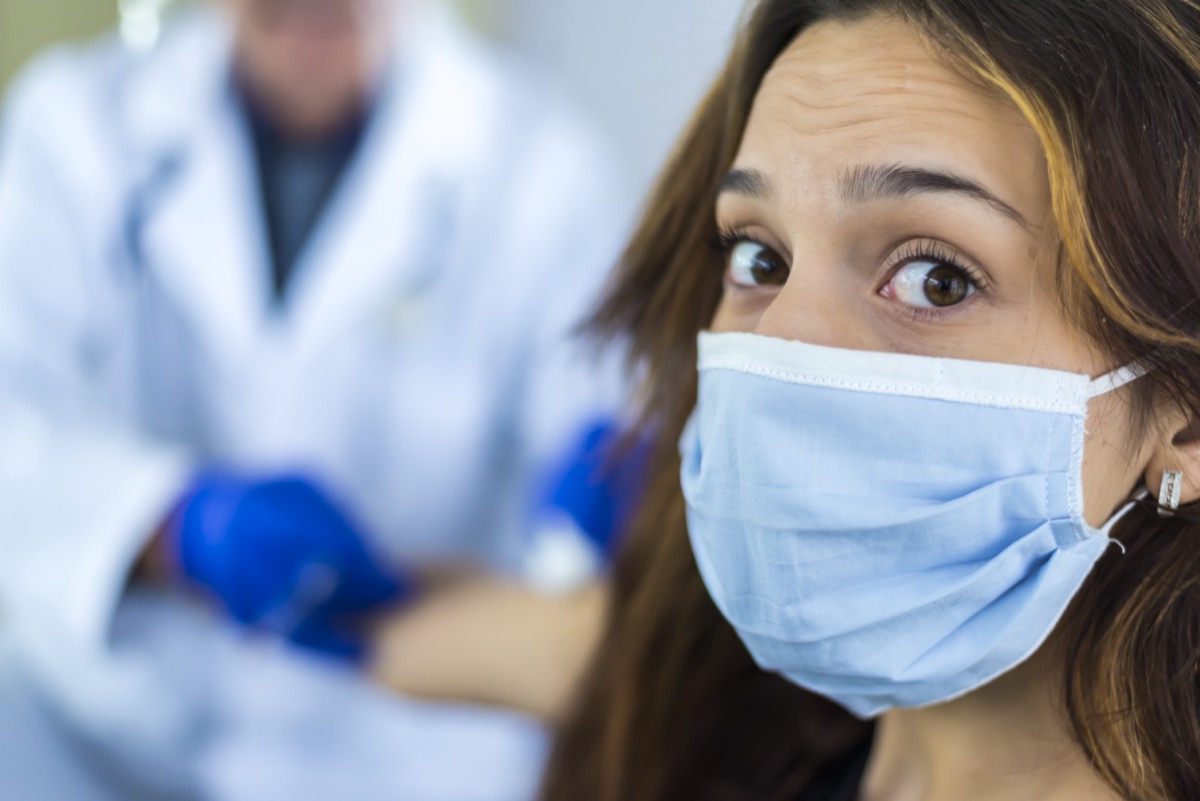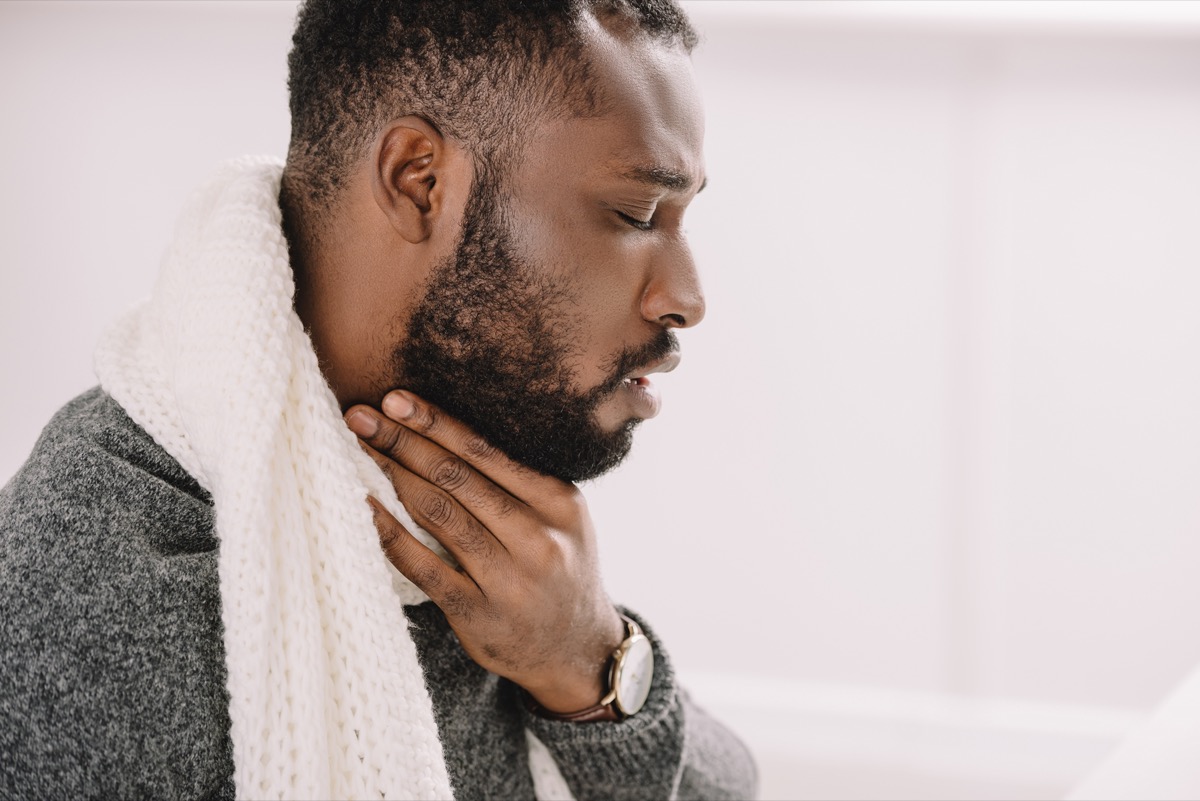The omicron subvariant of COVID-19, BA.5 is now the dominant strain sweeping rapidly around the United States and causing an uptick in cases. As a result, many areas are reimplementing mask mandates and safety guidelines in an effort to help prevent spreading the virus. To date, BA.5 is the most contagious mutation of COVID and it does evade immunity so staying healthy and trying to avoid the virus is vital. The symptoms can range from mild to severe and Eat This, Not That! Health spoke with Dr. Tomi Mitchell, a Board-Certified Family Physician with Holistic Wellness Strategies who shares signs that indicate you have BA.5 and what to know about the latest dominant strain. Read on—and to ensure your health and the health of others, don't miss these Sure Signs You've Already Had COVID.
Dr. Mitchell says, "As the world continues to grapple with the COVID-19 pandemic, scientists are working hard to learn more about the virus and develop effective treatments. One area of focus is the role of BA.5, a protein on the surface of the virus. BA.5 plays a key role in infecting human cells and causing disease. As a result, understanding BA.5 is critical to developing effective treatments for the virus. Researchers are still working to learn more about this protein and its role in the disease process. However, this information is already helping to inform the development of new therapies that could save countless lives."

Dr. Mitchell explains, "According to the Centers for Disease Control and Prevention, cases of COVID-19 are once again surging in the United States. The BA.5 omicron variant is fueling this latest wave of infections, which is causing increases in hospitalizations and ICU admissions. This variant is believed to be more contagious than other variants of the virus and thought to be responsible for the current surge in cases. The CDC is urging people to get vaccinated and boosted as soon as possible, as this is the best way to protect yourself from the virus. In addition, people should continue to wear masks and practice social distancing to prevent the disease's spread to prevent the disease's spread."

"The BA.5 variant of the coronavirus was first identified in January 2021 and has been tracked by the World Health Organization (WHO) since April," says Dr. Mitchell. "It is a sister variant of the Omicron strain that has been dominant worldwide since the end of 2020, and has already caused spikes in case rates – even with reduced testing – in countries including South Africa, where it was first found, as well as the United Kingdom, parts of Europe, and Australia.
The primary difference between BA.5 and other coronavirus variants is a mutation in the spike protein, which is what allows the virus to attach to and infect human cells. This particular mutation makes BA.5 more contagious than other strains, and it is also believed to be more resistant to some of the existing vaccines. As a result, health officials are urging people to get vaccinated as soon as possible, even if they have already received one or two doses of a vaccine from a different manufacturer. With BA.5 now circulating widely, it is more important than ever to take measures to protect oneself and others from the virus. These include wearing a mask, maintaining social distancing, and frequently washing one's hands."

Dr. Mitchell explains, "The Omicron subvariants are the most dominant form of the COVID-19 virus, and immunity against them appears to be waning. However, it's important to note that mRNA vaccines continue to provide very durable protection against severe outcomes from COVID-19, including hospitalization and death. In addition, preliminary data shows that natural infection — occurring up to 14 months ago — remains 97% protective. These findings underscore the importance of vaccinating as many people as possible."

According to Dr. Mitchell, "Although the COVID-19 pandemic has begun to slow in many parts of the world, there is still a risk of another surge in cases. One factor that contributes to this risk is the increasing number of variants of the virus that are circulating. These variants are more contagious than the original strain, and they can spread more easily among people who have not been vaccinated. Another factor is the relaxation of public health measures, such as mask-wearing and social distancing. As more people interact with one another, the chances of transmission increase. Finally, seasonal factors also play a role. For example, colder weather can cause people to spend more time indoors, with a greater risk of transmitting the virus. Although there is no guarantee that there will be another surge, it is essential to remain vigilant to protect yourself and others."

Dr. Mitchell tells us, "The first symptoms of COVID-19 are often fever, tiredness, and dry cough. Some people may also experience a sore throat, runny nose, or aches and pains. These symptoms are usually mild and begin gradually. However, some people can develop more severe illnesses, including pneumonia. Symptoms can appear 2-14 days after exposure to the virus. People with these symptoms may have COVID-19:
* Fever
* Tiredness
* Dry cough
* Aches and pains
* Sore throat
* Runny nose
* Diarrhea
People with these symptoms may have a more severe illness, such as pneumonia, and should see a doctor right away:
* Shortness of breath
* Chest pain
* Loss of speech or movement
If you have any of these emergency warning signs for COVID-19, get medical attention immediately. If possible, call your healthcare provider ahead and let them know about your symptoms and if you have had close contact with anyone who has COVID-19." And to protect your life and the lives of others, don't visit any of these 35 Places You're Most Likely to Catch COVID.
Dr. Mitchell says this "doesn't constitute medical advice and by no means are these answers meant to be comprehensive. Rather, it's to encourage discussions about health choices."
The post This is Usually the First Sign You Have COVID Now appeared first on Eat This Not That.
----------------
By: Heather Newgen
Title: This is Usually the First Sign You Have COVID Now
Sourced From: www.eatthis.com/this-is-usually-the-first-sign-you-have-ba5/
Published Date: Mon, 12 Sep 2022 11:45:32 +0000
Read More
Did you miss our previous article...
https://naturesmart.us/fitness/secret-exercise-tricks-to-slow-down-aging-and-live-longer
 HealthWellnessFitnessBeautyVideosPrivacy PolicyTerms And Conditions
HealthWellnessFitnessBeautyVideosPrivacy PolicyTerms And Conditions
